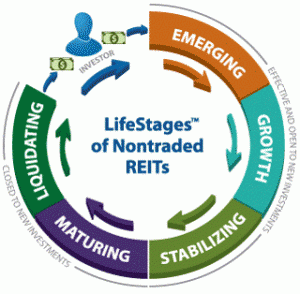The Future of Acquisition and Disposition Fees
November 16, 2016 | by Beth Glavosek | Blue Vault

Acquisition and disposition fees have long been a part of many nontraded REIT sponsors’ programs. The fees presumably cover costs related to acquisition and disposition activity. One sponsor, for example, states in its prospectus that it will pay its advisor a disposition fee if the advisor or its affiliates “provide a substantial amount of services in connection with the sale of properties.” In addition to compensating the advisor for services, the fee serves as a reimbursement for any real estate commissions incurred.
Perspectives differ among sponsors, some of whom charge these fees and some of whom have elected to lower or discontinue them. Inland Residential Properties Trust, Inc. announced earlier this year that it would completely eliminate acquisition, disposition, and coordination fees that cover financing activities. Such actions may put pressure on other sponsors to follow suit, but it’s not clear the actual impact that such fees have on shareholder returns.
Blue Vault’s Fee Study looked in-depth at sponsor fees and found that some sponsors may have lowered upfront fees in an effort to drive sales; however, they have raised or already have higher asset management fees, which have a much larger impact on shareholders because they are charged annually for the life of the program and are based in many cases on total assets rather than just shareholders’ equity. For example, a 1.00% annual fee on the assets of a REIT that has financed the assets with 50% debt has an annual impact on shareholder equity of 2.00%, reducing shareholder returns by much more over the life of the program than any other type of fee or expense.
The bottom line: Blue Vault believes that acquisition and other upfront fees can certainly raise the cost of the REIT program and possibly reduce net returns to shareholders over the life of the program. However, in our analysis, choosing asset investments that appreciate or generate higher net operating income over the life of the investment has much more of an impact than any upfront fees. Thinking this way, if a sponsor finds an investment for the REIT and purchases it for a good price, locking in a profitable opportunity, the 1.00% fee would be a very minor tradeoff.
More blog posts from this series:
- What’s Up (or Down) with Fees?
- Different Types of Fees and How They Impact Shareholders
- Different Types of Fees and How They Impact Shareholders – Part 2
- Different Types of Fees and How They Impact Shareholders – Part 3
[i4w_onlyfor tagid=’1500′]

Blue Vault’s Nontraded REIT Fee Study is now available:
First Edition Nontraded REIT Fee Study[/i4w_onlyfor]












